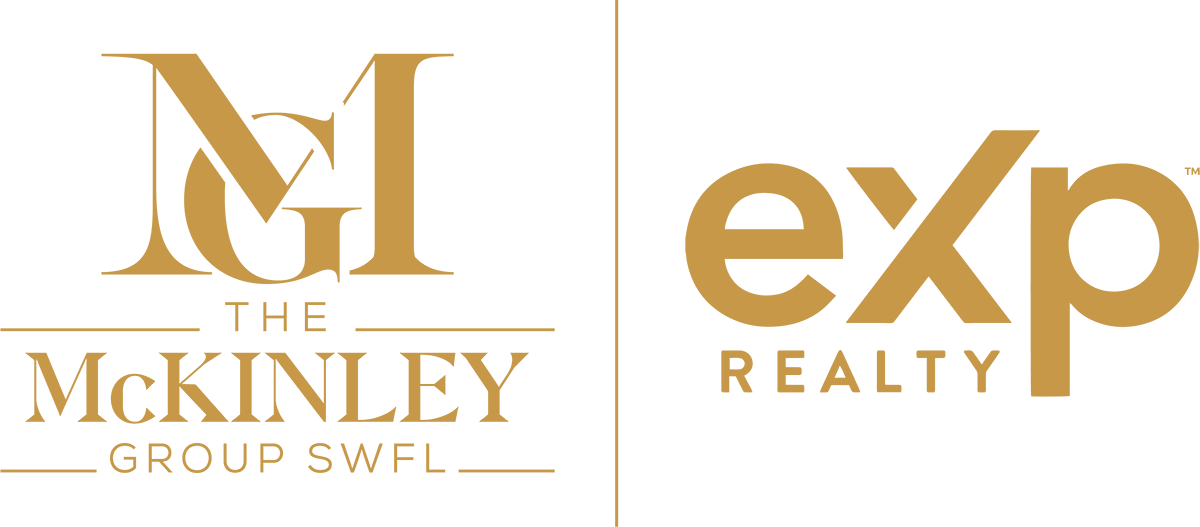Navigating the financial landscape of home buying starts with clearly understanding your budget. It’s crucial to assess the price of a home you can comfortably afford and consider ongoing costs like property taxes, homeowners insurance, and maintenance. This guide provides a comprehensive approach to evaluating your financial health, including factors like income, debt, savings, and the impact of mortgage rates, to ensure you make a well-informed decision on how much house you can afford.

Income Assessment
Understanding your net income is the cornerstone of determining how much house you can afford. Net income, the amount you take home after taxes and deductions, directly influences your borrowing power and the price range of homes you should consider. It’s not just about how much you earn but how reliably you earn it. Income stability, stemming from your employment situation, industry stability, and career trajectory, plays a crucial role in mortgage approval processes. Future prospects, such as the potential for salary increases or bonuses, also factor into how lenders view your application.
When calculating your net income, consider all sources of reliable income, including salary, consistent bonuses, investments, and any secondary sources like freelance work, provided they offer a steady stream of revenue. Presenting a comprehensive picture of your financial status to lenders is essential, highlighting your income’s stability and potential growth.
Income stability matters as much as the amount. For those in fluctuating income industries, like freelancing or sales, averaging your income over the past two to three years can provide a more accurate picture for lenders. Similarly, for those expecting significant changes in their income due to promotions or industry shifts, documenting these prospects can aid in your home-buying journey.
Future financial planning cannot be overlooked. Considering your career path and potential income changes can help you decide how much you can afford now and what you can sustain in the long run. It’s about balancing your current financial situation and future possibilities.
In conclusion, a thorough assessment of your income lays the groundwork for a realistic home-buying budget. It’s not just about the numbers on your paycheck but understanding your income’s stability and potential growth. This clarity is crucial for securing a mortgage and ensuring that your home purchase aligns with your long-term financial health. Before diving into the home-buying process, take a moment to accurately assess your income, as this will be the foundation upon which your affordability and financial stability are built.
Understanding Debt and Obligations
When buying a house, knowing your debt-to-income ratio (DTI) is as crucial as understanding your income. Your DTI is a percentage that lenders use to determine how much of your monthly income goes toward paying debts. It’s a critical factor in the mortgage approval process, influencing the amount you can borrow and the interest rates you’ll be offered. A lower DTI can lead to better mortgage terms, while a high DTI might limit your options or necessitate a larger down payment.
Debts include monthly obligations such as credit card payments, student loans, auto loans, and other debts reported to credit bureaus. To calculate your DTI, sum up your monthly debt payments and divide by your gross monthly income. Lenders typically prefer a DTI of 36% or lower, with no more than 28% of that going towards housing expenses.
Addressing your DTI before house hunting can significantly impact your buying power. Strategies to lower your DTI include paying off high-interest debts, avoiding large purchases that would add to your debt, and, if possible, increasing your income. Remember, even if your DTI is within acceptable limits, it’s essential to budget for future financial flexibility.
Your approach to managing debt should also consider the types of debt that impact your buying power. High-interest credit card debt is particularly detrimental, whereas low-interest, long-term loans like student debt are viewed more favorably. Lenders are interested in your ability to manage and repay debt responsibly, so a history of timely payments can work in your favor.
Understanding and managing your debt is fundamental in determining how much house you can afford. Your DTI affects your eligibility for a mortgage and also the terms of your loan. By taking control of your debt, you improve your financial health and position yourself as a more attractive candidate to lenders. This proactive approach to debt management is essential for paving a smoother path to homeownership, ensuring that when you decide to buy, you do so on solid financial ground.
Down Payment Considerations
The size of your down payment is a critical factor in the home-buying process, affecting everything from your mortgage approval odds to your monthly payments and interest rates. Traditionally, a 20% down payment has been the benchmark, offering the advantage of avoiding private mortgage insurance (PMI). However, the reality for many buyers is that saving 20% can be a significant challenge, leading to the exploration of lower down payment options.
Saving for a down payment requires a strategic approach. Start by setting a clear savings goal based on your target home price and desired down payment percentage. Consider opening a dedicated savings account and automating transfers to build your down payment fund steadily. Cutting discretionary spending, increasing your income through side gigs, and exploring down payment assistance programs can also accelerate your savings.
For those unable to save the traditional 20%, various mortgage options allow for lower down payments. FHA loans, for instance, can require as little as 3.5% down, while VA and USDA loans offer qualified borrowers the opportunity to buy a home with no down payment. Each option comes with its requirements and costs, such as mortgage insurance for loans with down payments of less than 20%, which should be carefully considered in your overall budgeting.
The impact of your down payment goes beyond the upfront cost. A larger down payment reduces your loan amount, which can lead to lower monthly payments, a lower interest rate, and savings on interest over the life of the loan. Conversely, a smaller down payment increases your loan amount and potentially your mortgage insurance costs, affecting your monthly budget and long-term financial planning.
Understanding the implications of your down payment choice is essential for a balanced home-buying decision. While a smaller down payment can make homeownership more immediately accessible, it’s important to weigh this against the long-term costs. Each buyer’s situation is unique, and what makes sense for one may not for another. Careful planning and consideration of your financial situation and housing needs will guide you to the right down payment strategy, setting you on the path to a successful and manageable home purchase.
The Influence of Mortgage Rates
Mortgage rates are pivotal in determining how much house you can afford, influencing both your monthly payments and the total cost of your loan over time. These rates fluctuate based on various economic factors, including inflation, Federal Reserve policies, and the bond market. Understanding how mortgage rates affect your buying power is crucial for timing your home purchase and selecting the right loan option.
A lower mortgage rate can significantly reduce your monthly payment, making a more expensive home more affordable or free up funds for other expenses. Conversely, a higher rate increases the cost of borrowing, limiting how much you can afford and potentially narrowing your home search. For example, even a slight increase in the interest rate can add hundreds of dollars to your monthly mortgage payment, affecting your long-term financial planning.
When considering mortgage rates, comparing fixed-rate and adjustable-rate mortgages (ARMs) is vital. Fixed-rate mortgages lock in your interest rate for the life of the loan, providing stability and predictability in your monthly payments. ARMs, however, start with a lower rate that can change over time based on market conditions, which potentially lead to higher payments in the future. While ARMs can offer initial savings, they come with the risk of rate increases, a crucial consideration for long-term affordability.
To navigate the complexities of mortgage rates, prospective homebuyers should closely monitor rate trends and consult with mortgage professionals to understand the best timing and loan options for their situation. Pre-approval can also lock in a rate for a short period, providing protection against increases while searching for a home.
The decision between a fixed-rate and an adjustable-rate mortgage depends on factors including your financial situation, risk tolerance, and the length of time you plan to stay in your home. Those planning for a long-term stay might prefer the stability of a fixed-rate mortgage, while those expecting to move or refinance within a few years might benefit from the lower initial rates of an ARM.
In essence, mortgage rates are a critical factor in the home buying process, affecting both the affordability and cost of your home loan. By understanding how these rates work and their impact on your finances, you can make informed decisions that align with your homeownership goals and financial plan. Keeping an eye on rate trends and exploring various loan options with a mortgage professional can help you secure a rate that fits your budget, ensuring a smoother and more predictable path to homeownership.
Additional Homeownership Costs
Embarking on homeownership extends beyond the mortgage payment; it encompasses a variety of additional costs that can impact your budget and overall affordability. Understanding these extra expenses is crucial for setting realistic expectations and ensuring financial stability as a homeowner. These costs include property taxes, homeowners’ insurance, maintenance, utilities, and, potentially, homeowners’ association (HOA) fees, each contributing to the total cost of owning a home.
Property taxes vary by location and are a significant ongoing homeowner expense. They are based on the assessed value of your home and fund local services and infrastructure. Similarly, homeowners’ insurance is mandatory for most mortgage holders, providing coverage for your home and belongings in case of damage or theft. The insurance cost can vary based on your home’s location, size, and other factors, such as proximity to emergency services.
Maintenance and repair costs are also critical to consider. A general rule of thumb is to set aside a budget of 1% to 2% of your home’s purchase price annually for maintenance. This fund covers everything from minor repairs to major updates, ensuring your home remains in good condition and retains its value. Utilities, including water, electricity, gas, and internet, are additional costs that can vary widely based on usage, location, and the efficiency of your home.
Monthly or annual HOA fees are another cost to consider for homes within a community governed by a homeowner’s association (HOA). These fees cover the maintenance of common areas and, in some cases, might include services like trash removal and snow plowing. While they can add value by maintaining the community’s appearance and amenities, they also add to your monthly expenses.
Planning for these additional homeownership costs is essential for a comprehensive budget that avoids financial strain. By understanding and accounting for these expenses early in the home-buying process, you can ensure a more accurate assessment of what you can afford, avoiding surprises that could impact your financial well-being as a homeowner. Careful budgeting and financial planning allow you to enjoy the benefits of homeownership while managing the ongoing costs, ensuring a positive and sustainable home-owning experience.
Pre-Approval and Mortgage Types
Securing a mortgage pre-approval is a vital step in the home buying process, serving as a financial vetting that boosts your credibility with sellers and clarifies how much you can afford. This preliminary assessment by a lender evaluates your creditworthiness, income, debts, and assets to determine your eligibility for a loan and the maximum amount you’re qualified to borrow. Not only does pre-approval give you a clear budget for your home search, but it also positions you as a serious buyer in competitive markets.
Mortgage options vary widely, catering to different financial situations, down payment capabilities, and long-term goals. Understanding the characteristics and requirements of each can help you choose the best fit for your circumstances:
Conventional Mortgages: These loans are not insured by the federal government and typically require a higher credit score and a down payment of at least 3%. Conventional loans offer flexibility in terms and conditions but may come with stricter qualification criteria.
FHA Loans: Insured by the Federal Housing Administration, FHA loans are designed for low-to-moderate-income borrowers. They require a lower minimum credit score and can be obtained with a down payment as low as 3.5%, making them an attractive option for first-time homebuyers.
VA Loans: Available to veterans, active-duty service members, and some surviving spouses, VA loans are backed by the Department of Veterans Affairs. They offer the benefit of no down payment and no PMI, along with competitive interest rates, but come with a funding fee.
USDA Loans: Targeted at rural homebuyers and backed by the United States Department of Agriculture, these loans offer 100% financing (no down payment) to eligible low-to-moderate-income buyers. However, they are geographically and income-restricted.
Choosing the right mortgage type involves balancing your current financial situation with your future goals and the total cost of the loan. Consider the down payment and interest rate, the loan’s term, fees, and any insurance requirements. Each loan type has its benefits and drawbacks, and what suits one buyer may not suit another.
Embarking on the mortgage application process with a clear understanding of the different types of loans and securing pre-approval can streamline your home-buying journey. It not only helps in setting realistic expectations but also in making informed decisions that align with your financial health and homeownership aspirations. With this knowledge, you can navigate the mortgage landscape confidently, taking one step closer to finding your ideal home.
The 28/36 Rule
Navigating the financial thresholds of home buying involves understanding fundamental guidelines like the 28/36 rule, a benchmark that lenders use to evaluate borrowers’ financial health. This rule helps individuals gauge how much they can comfortably afford to spend on housing without jeopardizing their overall economic stability. According to the 28/36 rule, no more than 28% of your gross monthly income should go towards housing expenses, including mortgage payments, property taxes, and homeowners’ insurance. Your total debt payments, including your housing expenses, should not exceed 36% of your gross monthly income.
This guideline ensures a balanced budget, leaving enough room for other expenses and savings. It also aligns with lenders’ criteria, increasing your chances of mortgage approval. To apply the 28/36 rule to your finances, calculate your gross monthly income. Then, determine what 28% of that figure would be to understand your maximum allowable housing expense. For the 36% calculation, add any other debts, such as car loans, student loans, or credit card debt, to see if your total debt payments would stay within this limit.
While the 28/36 rule is a valuable framework for budgeting, it’s essential to consider your financial situation and lifestyle. Some may find it more realistic to adjust these percentages based on their income stability, long-term financial goals, and the cost of living in their desired area. Additionally, lenders may have their own thresholds, sometimes allowing higher ratios for borrowers with strong credit scores or substantial savings.
Implementing the 28/36 rule can be a powerful step in your home-buying preparation, offering a clear view of what you can afford while promoting financial health. These guidelines assist in setting a budget for your home purchase and ensure that you can comfortably cover your housing costs and other financial obligations. By staying within these parameters, you safeguard your ability to manage unexpected expenses and future financial goals, establishing a solid foundation for your homeownership journey.
Navigating Your Path to Homeownership
As you stand on the threshold of making one of the most significant financial decisions of your life, understanding the intricacies of home affordability is paramount. From assessing your income and managing debts to evaluating down payment options and navigating mortgage rates, each step brings you closer to realizing your dream of homeownership. The journey involves carefully considering additional costs and choosing the right mortgage type while adhering to financial health guidelines like the 28/36 rule.
Embarking on this path equipped with knowledge and insight empowers you to make informed decisions, ensuring that your move into homeownership is both a joyous and financially sustainable venture. Remember, the process is complex, but you don’t have to navigate it alone. Whether you’re just starting to contemplate your budget or you’re ready to explore mortgage pre-approval, professional guidance can make all the difference.
If you’re poised to take the next step towards finding your perfect home, I’m here to help. Contact me to embark on a streamlined and informed home-buying experience. Together, we’ll turn your homeownership dreams into reality, ensuring a choice that fits your budget and your life. Let’s make your dream home a tangible part of your future.

